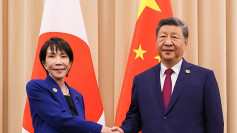China's marriage rate plummeted to a historic low in 2024, reflecting deepening demographic challenges despite government efforts to reverse the trend. According to data released Saturday by the Ministry of Civil Affairs, only 6.1 million couples registered marriages last year, marking a 20.5% decline from 2023 and the lowest figure since records began in 1986.
The continued drop in marriages, coupled with a persistent decline in births, underscores growing concerns over China's shrinking workforce and rapidly aging population. The demographic shift poses a significant challenge to Beijing, which has ramped up incentives and policies aimed at encouraging young people to marry and have children.
The 2024 decline resumes a decade-long downward trend that was briefly interrupted in 2023 following the lifting of strict COVID-19 restrictions. The number of marriages registered last year was less than half of the 13.5 million recorded in 2013, when marriage rates peaked.
Yi Fuxian, a demographer at the University of Wisconsin-Madison, described the decline as "unprecedented," noting, "Even in 2020, due to COVID-19, marriages only decreased by 12.2%." He warned that if the trend continues, "the Chinese government's political and economic ambitions will be ruined by its demographic Achilles' heel."
Economic uncertainty appears to be a major factor discouraging marriage. China's sluggish post-pandemic recovery, high youth unemployment, and rising living costs have left many young adults reluctant to commit to marriage and child-rearing. "Life is so exhausting, how could there be the courage to get married?" one user commented on the Chinese social media platform Weibo in response to the latest figures.
While fewer couples are getting married, divorces are increasing. The ministry's data showed that 2.6 million couples registered for divorce in 2024, up by 28,000 from the previous year. This comes despite the government's 30-day "cooling-off" period for divorce, implemented in 2021, which critics say makes it harder for women to leave troubled or abusive marriages.
Beijing has implemented a series of initiatives to combat declining marriage and birth rates. Local governments have organized mass weddings, speed-dating events, and financial incentives to encourage marriage. Authorities have also sought to rein in the tradition of large "bride price" payments, which make marriage financially burdensome for many men, particularly in rural areas.
Since 2022, the China Family Planning Association has led efforts to promote a "new-era marriage and childbearing culture," encouraging young people to marry and have children at an "appropriate age." Universities have even introduced "love education" courses to instill positive attitudes toward marriage and family life.
Despite these measures, the downward trend has persisted, largely due to shifting attitudes among younger generations, particularly women. Many educated and financially independent women are opting out of marriage, citing workplace discrimination, the unequal division of household labor, and societal expectations that place disproportionate burdens on wives and mothers.
The demographic shift has long-term implications for China's economy. The country's working-age population, defined as those between 16 and 59, declined by 6.83 million last year, continuing a contraction that is expected to accelerate in the coming years. Meanwhile, the proportion of people over 60 rose to 22% of the total population.
The government's concerns are not only about labor shortages but also about the strain on China's pension system and healthcare infrastructure. Over the next decade, an estimated 300 million Chinese citizens-almost the equivalent of the U.S. population-will reach retirement age.
China's birthrate showed a slight increase in 2024, attributed partly to the Chinese zodiac's Year of the Dragon, which is traditionally seen as an auspicious year for having children. However, the rise was insufficient to prevent the country's population from shrinking for a third consecutive year.
China's policymakers have struggled to reverse the effects of decades of strict population controls. The one-child policy, enforced from 1980 to 2015, dramatically reshaped family structures. Even after Beijing relaxed restrictions, allowing couples to have two children in 2015 and then three in 2021, birthrates continued to decline.






